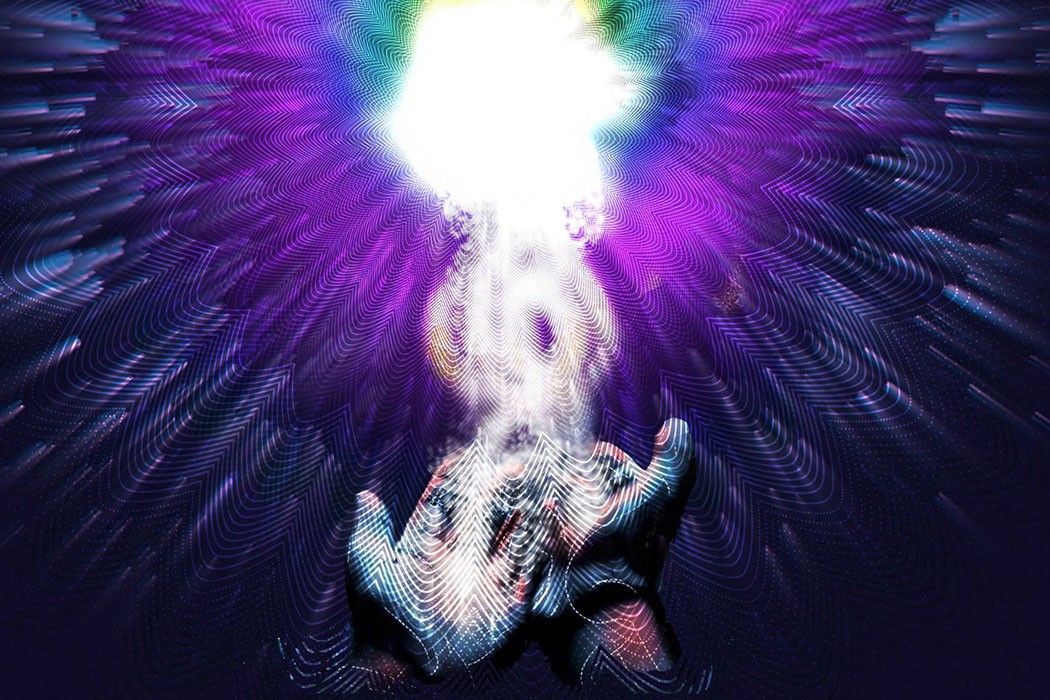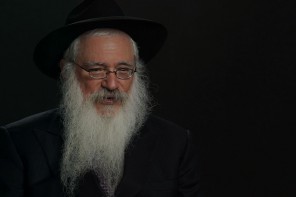What is a Soul?
When you hear the word “soul” or “spirit,” what comes to mind? How could discovering the meaning of the soul help bring fulfillment and purpose to your life? Is there a clearly articulated view of the soul in Jewish literature?
Great sages, philosophers, thinkers, and religionists[1] have probed the human condition since time immemorial, emerging often with novel postulations to explain the mysteries of the often-dichotomous human experience.
Like so many other subjects, Jewish scholars have held decidedly distinct views of the soul, dividing the map of Jewish scholarship between the philosophers and the Kabbalists. In this article, we will study the view of Maimonides and compare his conception of the soul to those espoused by the Masters of Kabbalah.
The Zohar teaches that it is imperative to study about the soul, inasmuch as one of the questions put to the soul after death is whether it directed sufficient effort to understanding the nature of the soul and its purpose.[2]
Portrait of Intellect
To Maimonides (and other philosophers including Aristotle[3]), the human soul is a single,[4] indivisible unit, gifted with a host of unique powers, each of which is tasked with a distinct human function.[5] However, at its core, the soul is defined as a potential for a perfect form of intellect and knowledge:[6]
The soul of all flesh is the form which it was given by G-d. The extra dimension which is found in the soul of man is the form of man … which knows and comprehends ideas that are not material, like the angels, who are form without body.
As such:
It … knows the Creator of all things, and exists forever.[7]
The soul is thus defined as the cognitive ability to grasp concepts that transcend our tangible senses, and through which one can receive a flow of prophetic insight communicated by the angels.[8] Being of this sublime quality and transcending all matter, the soul is immortal and endures even after one’s physical demise.
This potential for knowledge distinguishes human from animal.[9] For animals, too, are animated by a spiritual life-force (a “soul”), but the human is endowed with the ability to impress the truths of wisdom upon the powers of the body, its functions and talents.[10] Maimonides thus refers to the animating power of the body as “matter,” and the soul, “form.”
The Evolving Soul
Upon birth, the coarseness of the body (the “matter”) prevents the development of this potential for knowledge (the “form”[11]), and as one grows, the intellect matures and the souls’ potential for divine consciousness is further realized. As one’s physical strength wanes, the soul becomes progressively unshackled by the limitations of the body and has the potential to sharpen and purify its perceptions, culminating in the ultimate apprehension of truth upon the demise of its physical sanctuary, the body.[12] The reason this happens only upon one’s death, is that by definition the human is incapable of grasping the true oneness of reality with G-d,[13] as the verse states, “For no man can see Me and still live”[14]. Only once the soul is no longer burdened by the mortal coil can it truly attain a full understanding of the divine, and this is only possible in the World to Come.[15]
End of Days
Furthermore, in Maimonidean thought, the ultimate purpose of all of mortal life, including the utopian era of the Moshiach in the end of days, is for the soul to understand the Creator in the World to Come, when (according to Maimonides) all souls will be divested of their physical abode and only exist in a spiritual reality.[16]
In sum, the philosophical approach of Maimonides and others casts the soul as an intellectual entity whose potential must be actualized, without which the individual lacks the advantage of humanity, and has forfeited his portion in the Afterlife, which is an experience of knowledge.
Torah’s Esoteric Teachings about the Soul
The teachings of Kabbalah introduce an entirely new dimension to the discussion about the nature of the soul. While the philosophical approach defined the soul as an intellectual organism whose cognitive potential must be fostered in order to gain immortality, mystical works inform us that the soul is an entity that, at its core, transcends, and is not bound by, the parameters of intellect altogether.[17]
In describing the soul, the Zohar states:
“The soul has no definitive name or place [where it resides], but its dominion extends to the entire body.”[18]
Rabbi Aharon Shmuel of Kremnitz (-1615) in his Nishmas Adam thus states:
Regarding the essence of the soul, its foundation and secret, [both] the early and later sages have elaborated upon this each in their own way. However, they have all failed to find an eye-opening and intuitively understood explanation of the source of the soul and its essence. We, however, trust the [teachings] of those qualified [in these matters] and “plant our stake in a dependable place” from which we will not deviate nor depart. These are the words of the sages [who taught] the true wisdom, which was imparted from one sage to the next, all the way from Moshe our teacher o.b.m. They state that the soul of man is essentially transcendent, holy and pure. It stands in its essence before its Father, the King, King of Kings, may He be blessed, from before the existence of man in his original state on earth, just like all other sublime legions of heaven, but at even loftier heights than they. For the soul is a spirit and spark of the great and honored [transcendent] Name of G-d, may He be blessed.[19]
In the view of the Kabbalists, defining the soul purely as an intellectual being is incorrect and underestimates its value and influence. Instead of the soul being a cognitive potential upon whose development hinges one’s ability to experience the Afterlife, the essence of the soul is a (living[20]) entity whose core is pristine and eternal, which also encompasses within it all of the cognitive, emotive and practical powers of the human encounter with life.[21]
Furthermore, the soul is referred to by Scripture as being a “part of G-d,” as it were.[22] Jewish mysticism explains that insofar as the soul is carved from the sublime levels of divinity, it, too, is vested with all the attributes that characterize the divine framework through which G-d interfaces with reality,[23] and in this respect, it is literally a part of G-d.[24] Thus writes R. Moshe Chaim Luzzato[25]:
“Know that the Jewish soul is literally (“mamash”) a part of G‑d, for the whole and the part are equal.”
Rabbi Shneur Zalman of Liadi further explains that, ultimately, the soul is rooted in the most sublime essence of the divine,[26] and from this vantage point the soul is totally identified with divinity and is not an entity unto itself,[27] and does not process its experience in cognitive terms. This spark of the divine is then formalized through a process of creation,[28] through which it assumes the intellectual and emotional attributes in potentia,[29] always retaining its core, primal identity as being a part of G-d.
The knowledge that we possess a soul that is rooted in the essence of the Almighty can be very empowering. By experiencing the soul’s bond with the Almighty, one can harness this strength to surmount all of one’s inner challenges, synthesizing all of life’s details so that they reflect the purpose for which one has been given life. Moreover, all of reality ultimately can be determined by the actions of the individual, effecting a true transformation within a world that is not aligned with the divine imperative. No obstacle can stymie the influence of the divine soul.[30]
[1] An excellent compendium on the subject citing the various views on the soul can be found in R. Saadya Gaon, Emunot Ve-de’ot with the commentary of R. David Ha-Kohen, Derech Emunah, article six.
[2] Zohar Chadash, Shir Ha-Shirim, 70b
[3] See Zichron Yitzchak on Nachmonides Bereishis 2:7.
[4] In this regard, Maimonides differs from the view of some scholars who understood the human experience to be oriented by multiple souls. See R. Avraham bar Chiya Ha-Nasi (1070-1145), Higayon Ha-Nefesh, Leipzig 1859, p. 11. This view is also cited by Nachmanides (ibid.). It should be noted that R. Avraham bar Chiya appears to vacillate between these two views in his work Megilas Ha-Megilah, Berlin 1924, p. 85.
[5] Maimonides, Introduction to tractate Avos, 1
[6] Maimonides, Yesodei HaTorah, 4:8
[7] Maimonides, ibid., 9
[8] See Pirush, Yesodei HaTorah, ibid., based on Yesodei Ha-Torah 2:7
[9] See Pirush, ibid.
[10] Pirush, ibid.
[11] The colloquial “form” describes the physical contours of an entity. Here, the term refers to a qualitative characteristic that differentiates one category of being from another (See Pirush, ibid.).
[12] Guide to the Perplexed, ch. LI.
[13] See Maimonides, Hilchos Yesodei Ha-Torah, 1:10
[14] Shemos, 33:20
[15] See Maimonides, Hilchos Teshuvah, 8:6
[16] See Maimonides, Hilchos Melachim 12:4. Hilchos Teshuvah 8:7. See Likutei Sichot, vol. 33 p. 89. Vol. 34, p. 135, fn. 39. Cf. Sefer Ha-Sichot 5752, vol. 1, p. 186.
[17] See R. Aharon Shmuel of Kremnitz (-1615) in Nishmat Adam, ch. VIII (Reprinted in Jerusalem 2006, p. 157). This work was originally printed with the approbation of leading Kabbalist, R. Yeshaya Horowitz.
[18] Zohar, vol. II, p. 257b
[19] Nishmat Adam, ch. I (p. 12). R. Yehuda Loew (1520-1609) in Gevurot Hashem, Hakdamah Sh’niah (London 1954, p. 10). Reishit Chochmah, Sha’ar Ha-Ahavah, ch. I. She’elot Uteshuvot Yachin Uboaz, (Vol. I, ch. 134).
[20] Cf. R. Yosef Yitzchak Schneersohn, Sefer Ha-Ma’amarim 5708, p. 13. There he explains that the definition of “living” can only apply to an entity, as it exists within a human frame of reference. The soul, however, at its core cannot be defined as “living” either.
[22] Iyov 31:2.
[23] See R. Yeshaya Horowitz, Shenei Luchot Ha-Brit, Toldot Adam, Beit Chochmah, sec. 209.
[24] See R. Shabsi Sheftel Horowitz (1565–1619), Nishmas Shabsi Halevi (Podgorze, 1898), p. 10. See also this author in his introduction to Shefa Tal (Reprinted in Jerusalem 2007, p. 5).
[25] Choker Umekubal (Shklov, 1784), p. 14.
[26] See also R. Yitzchak Adarbi (1510-1584), Divrei Sholom (Venice, 1585): “The Jewish people endure forever because their souls are eternal, and [they] persist as they are not subject to the restraints of time, and they transcend time, inasmuch as they are a part of His essence, may He be blessed.” See sources cited in Toras Chaim (by R. Dovber Shneuri, the Miteler Rebbe), Va’eira, p. 102 fn. 7.
[27] See Tanya, Likutei Amarim, ch. II. Igeret Ha-Teshuvah, ch. III-IV. Sefer Ha-Ma’amarim Melukat, vol. II, p. 102.
[28] As the liturgy of the morning blessings state, “You created it, You formed it, You have breathed it into me, and You preserve it within me.”
[29] The Kabbalists respond to the question put forth by the philosophers as to why a child lacks intelligence upon birth, if the soul is fully outfitted with cognitive powers (See R. Meir ibn Gabai (cir. 1480—) Avodas Hakodesh, vol. II ch. 23 (p.85); Nishmas Adam ch. III, p. 61).
The Tanya (ch. 51) explains that the soul is a pristine, uncompounded essence, which includes in potential form all the powers of the various organs, and it is these faculties, which each individual organ receives. The mind receives, from the life-force of the soul, the power to think; the eye receives, from the life-force of the soul, the power to see, and the ear receives from it the power to hear. These powers were originally included in potentia within the soul, and each becomes revealed as the life-force becomes enclothed within the respective organ. Thus the power to see or hear does not originate only when the life-force becomes enclothed within the eye or ear; it already exists in potentia within the comprehensive life-force emanating from the soul, although it is not yet revealed. See Lessons in Tanya (Kehot, 1997), vol. II, pp. 767-769.
[30] See R. Menachem M. Schneerson, Likutei Sichos, vol. IV, pp. 1207.




